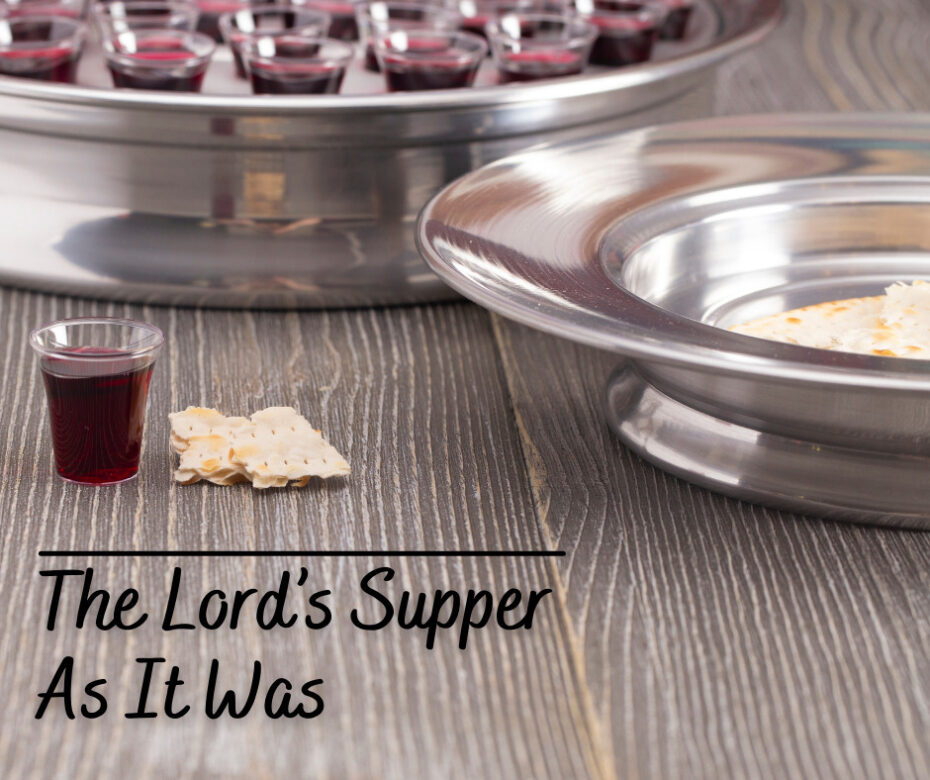Here is the eminently readable William Barclay describing how the Lord’s Supper was originally celebrated:
It is not in doubt that the Lord’s Supper began as a family meal or a meal of friends in a private house…It was like the Jewish Passover which is a family festival and at which the father and the head of the household is the celebrant. There can be no two things more different than the celebration of the Lord’s Supper in a Christian home in the first century and in a cathedral in the twentieth century. The things are so different that it is almost possible to say that they bear no relationship to each other whatsoever. The liturgical splendor of the twentieth century was in the first century not only unthought of; it was totally impossible (Barclay, The Lord’s Supper, pp. 111-12).
The Lord’s Supper moved from being a real meal into being a symbolic meal…The idea of a tiny piece of bread and sip of wine bears no relation at all to the Lord’s Supper as it originally was. It was not until the Synod of Hippo in AD 393 that the idea of fasting communion emerged. The Lord’s Supper was originally a family meal in a household of friends (Barclay, The Lord’s Supper, p. 112).
I am amazed at the consensus that the Lord’s Supper was originally a full meal. Virtually all commentators agree—even Roman Catholic ones! And they also all agree that the celebration changed over time.
But so far, I haven’t read very many of these commentators evaluate whether it should have changed. They just accept the fact that it did and move on to the next point.
Well, that raises several questions for me, such as: should it have changed from a meal to a symbolic meal? If not, shouldn’t we change it back?
I wonder: would there be any advantages to going back to celebrating a full meal together? How could such a supper impact fellowship, friendship, sharing, discipleship, unity, evangelism, and caring for the needy and hungry? Would the setting of a full meal help or hinder those things? I’m hungry for answers!


